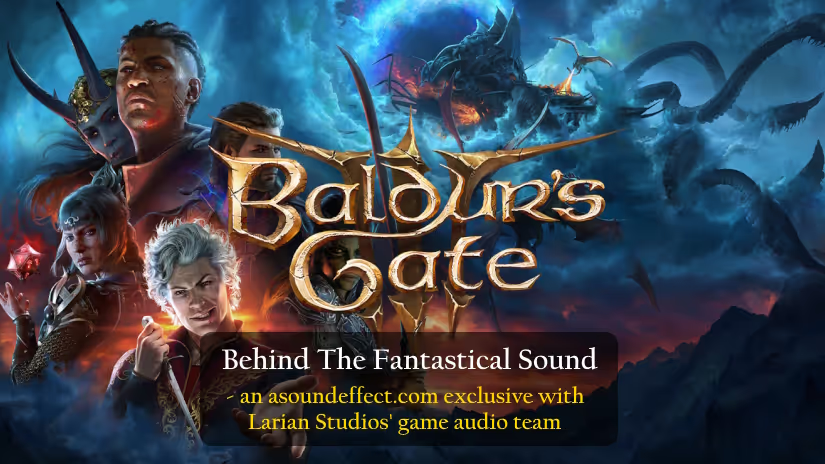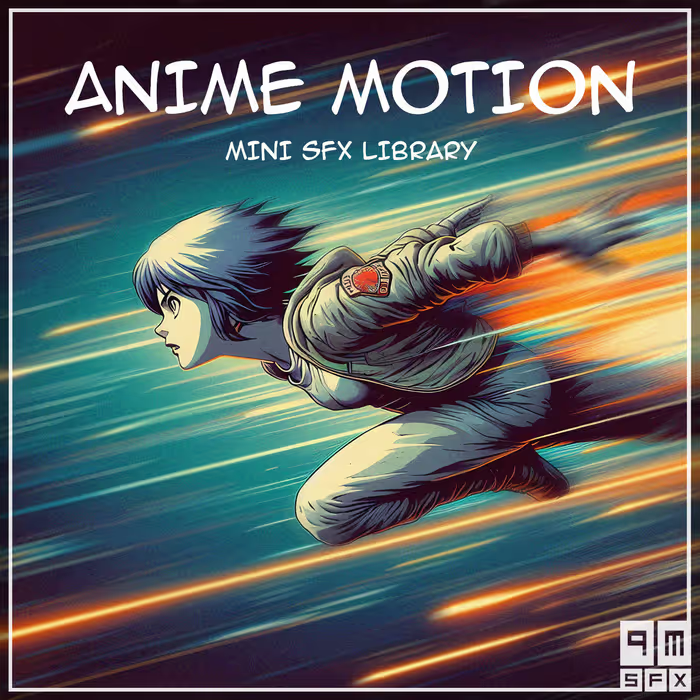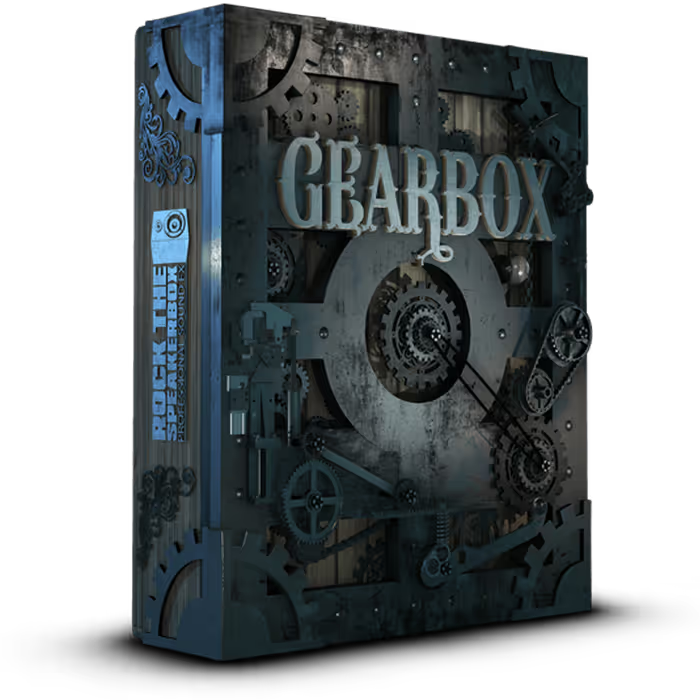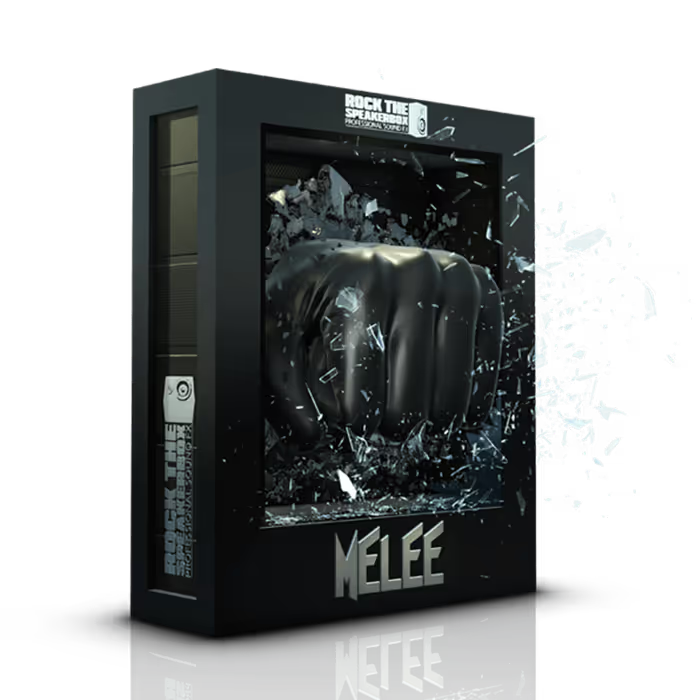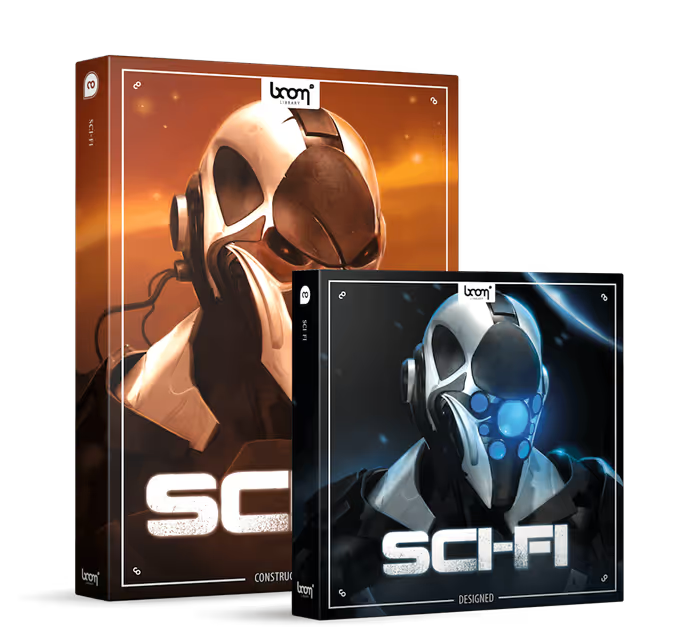Baldur’s Gate 3 (developed and published by Larian Studios) is a role-playing video game based on Dungeons & Dragons. It features turn-based combat that allows a player to go solo and control the movements/actions of all the characters in the group, or team up with other players online. And since each character takes a turn, if it’s the enemy’s turn to make a move, the player can only wait and watch the damage happen until it’s their turn again.
The game unfolds in three Acts, taking the player on an epic adventure through forests, groves, caves, and towns to seek treasure, complete quests and side-quests, and, of course, battle a fantastic array of enemies.
Audio Director Stefan Randelshofer says, ‘I’m very happy with the soundscape of Baldur’s Gate 3. It is such a complex game with so many storylines, ideas, and elements, and all of them needed to be translated into a soundscape that is beautiful and rich but still communicates well with the player.’
Here, members of Larian Studios sound team – Audio Director Randelshofer, Borislav ‘Bobby’ Slavov (Composer/ Music Director), Matthew Rosen (Audio Programmer), Frank Munro (Sound Designer), Diarmuid Nolan (Sound Designer), Robin Seyral (Sound Designer), and Andrea Abbruzzese (Tech Sound Designer) – discuss their approach to delivering a game that sounds immersive, rich, and enveloping, how the sound of the game evolved over the course of development, how they recorded custom sounds for use in magic, spells and songs, how they handled the massive amount of sounds need for different characters classes, actions, spells, and abilities, how they created unique ambience for the varied locations, how they wrangled nearly 180,000 lines of dialogue, how they designed their interactive music system, and much, much more!
Baldur’s Gate 3: Launch Trailer
Can you talk about finding the overall sound aesthetic for Baldur’s Gate 3? What were some of your sonic inspirations or ideas for how you wanted this game to sound? What were some keywords you shared with sound team members to help focus their designs to match that aesthetic?
Stefan Randelshofer (SR): Amongst all the AAA titles that I’ve worked on, Baldur’s Gate 3 is one with the most complex storyline that I know of. Getting the soundscape unified and mixed was my biggest challenge. The audio team did an awesome job in creating assets of any kind – beautiful music by our Composer/Music Director Borislav Slavov (Bobby), an insane amount of well-performed voice over, and a plethora of sound effects including some of the most intense spell sounds, and some of the most beautiful soundscapes I’ve ever heard so far.
The aesthetics of our combat and spell sounds… helped us to create an impactful and juicy soundscape, which feels rewarding…
My focus was on the mix of the soundscape and for that, I focused on the following keywords: impactful, juicy, rich, and rewarding. I think you can hear and experience the result in our full-blown high dynamic range 3D Audio/ Dolby Atmos mix. To achieve that, we gave the combat and spell sounds a lot of room in the lower and higher frequencies while letting the music, the environment, and dialogue live in the mids. This general approach of frequency juggling paired with our very own frequency-based ducking system allowed us to be in full control of the mix. The aesthetics of our combat and spell sounds made this possible and helped us to create an impactful and juicy soundscape, which feels rewarding and manages to be rich in content at the same time.
Robin Seyral (RS): The main question for us was how to sonically translate the tabletop DnD (Dungeons & Dragons) universe into a videogame experience and how to make this experience believable – how to give life to a whole fantasy universe. We wanted the overall soundscape to feel believable, for the player actions to feel powerful but in a sharp and subtle way, without falling into over-designing things.
A keyword that we used a lot across the project (and specifically in our spell design) was ‘suspension of disbelief.’
We came up with an idea of prioritization in our different sound categories, which also helped to define our mixing hierarchy. For example, we decided that the strongest category in our gameplay sounds was magic and spell casting in general, as it is usually considered the most extraordinary and otherworldly element from a player perspective.
A keyword that we used a lot across the project (and specifically in our spell design) was “suspension of disbelief.” We wanted some parts of the game to feel deeply grounded, and others to be abstract as well, but always to feel believable to the player.
Another very important keyword was “rewarding.” We wanted the player to feel rewarded and empowered when, for example, casting a spell, succeeding a dice roll, or making a meaningful narrative choice. This idea stayed with us from the beginning to the very end of the project.
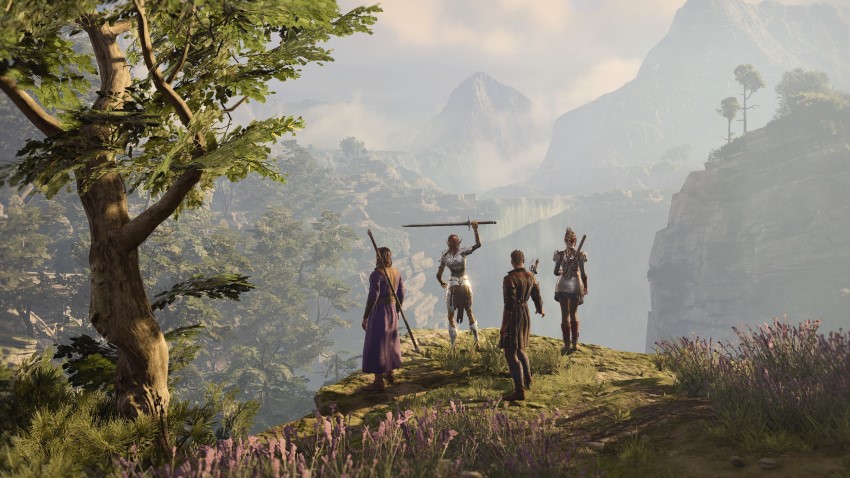
In terms of sound, what did you start on first for Baldur’s Gate 3? And did you end up going back and reworking those sounds as the game evolved?
RS: I started at the very beginning of the production by working on the ambiences for the first levels of the game while the core gameplay sound systems were simultaneously being developed.
There were many iterations on the ambiences as this is a major and essential part of the development process and philosophy here at Larian Studios, which was supported by the early access of the project. Each iteration gave us a chance to enhance the quality of our work but also to further develop the creative aspect of our designs while making the soundscape more cohesive and coherent. It’s a great way to take a step back, reflect on our own work, and improve things. Even though it can be frustrating at times to just redo something all over again, it’s usually for the best.
I did a complete overhaul of the dynamic destruction system for when debris collides with the ground.
Frank Munro (FM): I joined the team a few months before the push for the early access release in 2020, so the majority of the core systems were already established.
Shortly after the early access release, I did a complete overhaul of the dynamic destruction system for when debris collides with the ground. The system ended up being a total of 10 materials, each with 4 weight variants from giant to tiny, and having an RTPC (Real-time Parameter Controls) to track the velocity of each piece of debris.
The final result of making a lasagna of blend containers and sequence containers in Audiokinetic’s Wwise – so you could really feel the debris behave in a natural way – was a big improvement and a fun challenge over the original approach of “hit ground = play impact.”
The functionality ended up being very close to the Impacter plugin you can get for Wwise (which was actually originally created by one of our technical sound designers Sean Soraghan when he worked at Audiokinetic) but a much more Frankensteined version. Having the solid pieces impacting the ground at different weights mixed with the smaller bits of debris that trailed in the tail made a much more natural feeling and helped to make all the weights very sonically different. On the downside, now I’m cursed because the first thing I do when I start playing a new game is start breaking everything and judging their destruction sounds.
Diarmuid Nolan (DN): Charm Person was one of the first spells I remember working on that needed some changes later on. When a spell makes Impact, we like our sound design to draw focus solely on how it affects the opponent. However, to get this one right, that rule had to be broken, highlighting instead the clicking of the spellcaster’s fingers as our impact sound. We felt that this was more symbolic of charming or hypnotic behavior.
To enhance immersion, I created several spatialized and positionally randomized sound groups in Wwise for visual effects…
Creating the sounds for the character creator class effects was a process of constant iteration.
Originally, my goal was to create fully detailed, 3D-positioned audio, accounting for the player’s ability to rotate their character and zoom in/out. This approach was met with technical difficulties given that our character creator doesn’t function as a fully 3D environment.
Instead of this, I used mostly 2D audio with a state group in Wwise changing volume parameters when zooming. To enhance immersion, I created several spatialized and positionally randomized sound groups in Wwise for visual effects, such as visual particles, or the druids leaves for example. These required tweaking minimum offsets and durations on the trigger rate of transitions and shuffling between a randomized set of positional patterns whilst holding the listener’s orientation. Random range was used to take advantage of height dynamics for those who play with spatial sound simulators. Sometimes these sounds were topped off with delay or reverb within Wwise.
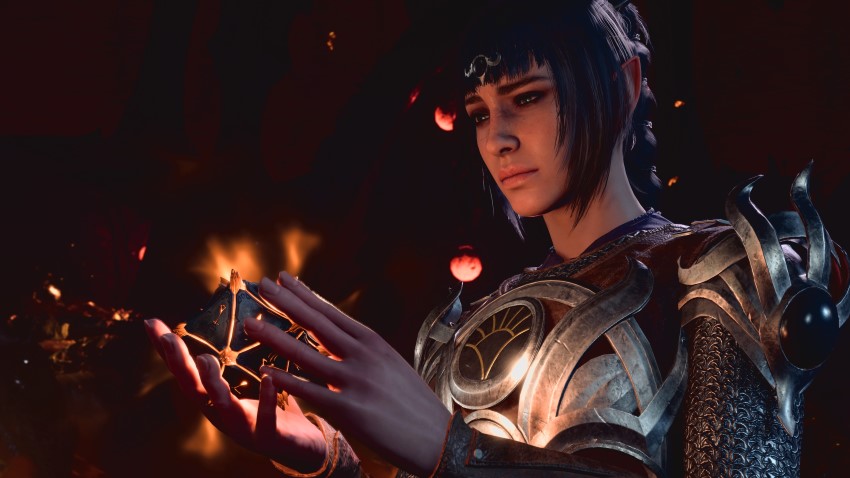
Did you capture any custom recordings for the game? If so, what did you record, and what was your mic setup for them?
Frank Munro (FM): In short, yes. There were lots and lots of custom recordings as building up our internal library was important to keep things interesting. Despite not having one unified setup, everyone who did recordings had their own style and arsenal of microphones. Let me share some highlights here:
• We collaborated with The Monster Factory to record vocals for a few creatures near the end of production. They are essentially a conglomerate of metal vocalists so it was seriously impressive and disgusting in the best way. They also recorded some shouts for the Barbarians’ rage, and various styles of throat singing to use as layers in the design of the monk spells. All of these recordings were done in a studio setting with the Sanken CUX-100k at 192khz for limitless morphing, and at various distances depending on the loudness of the performance.
We collaborated with The Monster Factory to record vocals for a few creatures near the end of production.
• Another of my favorites was recording all the instrumentation for the spellcasting of the Bard class. I have zero background in music production or proper instrument recording setups so I approached it with the brain of a sound designer. The setup of microphones consisted of a stereo pair of Sennheiser MKH 8040, a Sanken CO-100k, and a contact microphone. The intention for the Sennheisers was to capture the actual tones and get the full richness of the instrument. The Sanken was there to capture all the harmonics to play with pitch shift to get the “magical” effects for processing later. And the contact mic was there just to experiment and have more options.
It’s always better to record as much as you can when you are there and have it than to get in your DAW and wish you did.
It’s always better to record as much as you can when you are there and have it than to get in your DAW and wish you did. Anything is useful in the right scenario. This was all recorded with a Sound Devices MixPre 3-II at 32-bit float and 192khz.
My default recording setup for any quick things I needed to do was a stereo pair of LOM mikroUši ‘s and a RØDE NTG3 into a MixPre 3-II. I recorded lots of destruction sounds with this and some more abstract ones like balloons, scraping metal, and styrofoam for spells and creatures. The mikroUši are great because they are quite sensitive, able to capture lots of details and they have great frequency response. They’re very affordable for what they are able to capture – if you are able to get your hands on them before they sell out!
Video interview: The Immersive Sound of Baldur’s Gate 3
RS: I recorded my cello with a Sanken CO-100k and a pair of MKH 8040s in order to get some abstract, eerie, and ominous material that I could pitch up or down and re-reprocess; a lot of the mindflayer-related ambiences are built around those sounds such as the nautiloid ambiences in the tutorial or the mindflayer colony ambiences. It helped a lot in translating the psionic feel and brought a lot of originality to those designs.
My own voice is also used a bit (for everywhere in the ambience) as well as on a few creatures in the game. It’s always a super fun process to record our own materials, and sculpt those to add them as layers in our design.
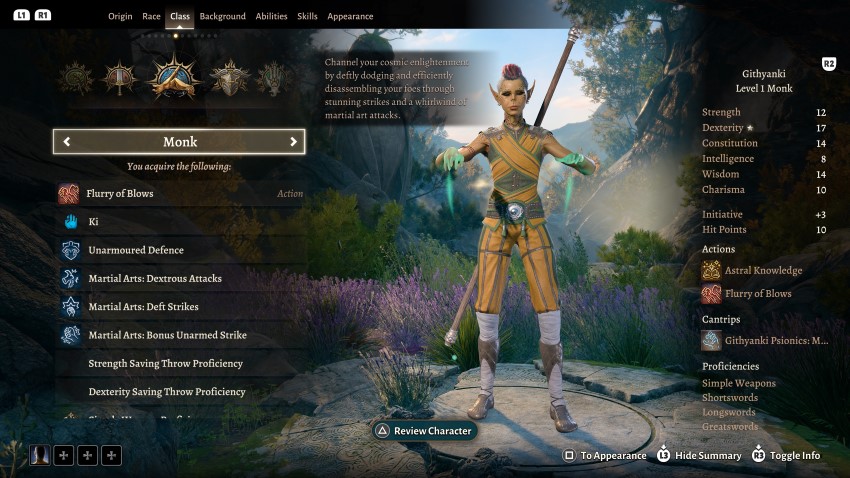
Looking at the Character Classes and their Action sounds, there are 12 main classes of characters (and subclasses of those) and each class has specific actions they can do, like attacks, casting spells, and movements like dash and jump. There are SO MANY actions! Can you talk about your overall approach to creating sounds for ALL these actions? How did you divide and conquer such a huge task?
FM: To minimize the general workload, a core mindset in our design for Baldur’s Gate 3 is systematics. This was consistent across all parts of the project, making sure that everything we created was easily able to be expanded upon if needed and simple to manage. You can’t do 100% unique things for 600+ actions.
It was essential that we had a tight collaboration with the VFX team in this regard as well. Most general actions or spells core to a specific class, and actions or spells falling under the intention of the spell (i.e.. elemental damage, debuff, healing, utility, buff, etc.) all have a generic prepare SFX/ VFX. Every action or spell needed a unique Cast and Impact to portray the specific effect of that spell so there is still a lot of bespoke sounds being made.
However, there were always exceptions to the rule for some iconic DnD spells or special powers. So, quite a lot of things got completely unique treatment from bottom to top.
Taking a systemic approach not only makes our lives easier for asset creation but also creates clarity in the psychoacoustics to the player.
Taking a systemic approach not only makes our lives easier for asset creation but also creates clarity in the psychoacoustics to the player. It gives each category of spell a starting point in terms of the types of layers you would want to use in your design for the Cast and Impact so all the types of actions have contrast.
In terms of tackling the class actions/spells specifically, it was important to not have too many cooks in the kitchen. By that I mean there was always one person on the team who was in charge of the class and carried the majority of the vision for the soundscape of said class.
…there was always one person on the team who was in charge of the class and carried the majority of the vision for the soundscape of said class.
The workload was still divided among the team for the most part but it was important to not have four people trying to direct their vision as they thought it should be. Of course, we collaborated and took feedback and suggestions from one another as a team should. The first idea is hardly ever the best idea.
It was also important to identify the core themes and textures for each class before even opening our DAW. A few classes also introduced new gameplay systems so it was always important to be involved in those conversations, to ensure our systems created for sound could piggyback off theirs as smoothly as possible.
So in summary, we made sure that every class or category of spell started with a core concept of sonic textures unique to them, while conveying the intended nature of the spell, and we built intuitive systems that are easy to expand on around that.
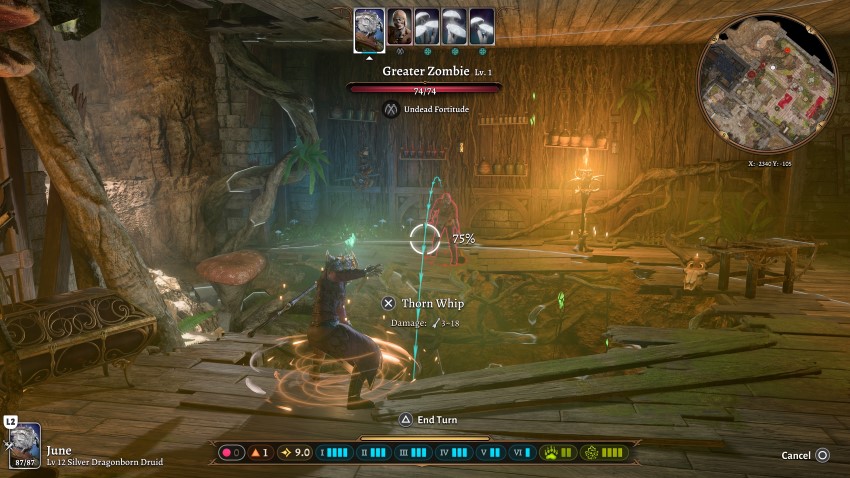
What action sounds are you most proud of, or were your favorite to create?
FM: My favorite sounds to create were probably the tadpole powers you can get, as well as the powerup menu for this alongside Robin. It’s a completely different world and sound palette from the high fantasy magic that you hear throughout the whole game because they are essentially brain-alien superpowers. It’s a weird mixture of sci-fi and organic while still sounding magical, and that was an interesting concept to explore. Categories doing weird, more abstract, and disgusting stuff are my favorite things to design and this was a combination of all three.
The Bard spellcasting is probably my favourite and the one I’m most proud of, mainly because I don’t think the Bard has been captured before in the way that we did in BG3 – not just in sound but across all departments and the core design and animations.
The Bard spellcasting is probably my favourite…because I don’t think the Bard has been captured before in the way that we did…
When trying to find references, there really wasn’t a lot to build off of for what we wanted to achieve. The essence of the Bard is conjuring their magic through their instrument and the music which was so exciting to imagine. Essentially, we have five instruments you can equip and use as your means for spell casting, and if you don’t have an instrument, you whistle.
The cool part was recording and designing for all the intentions of the spells. It was separated into four categories: Buff, Debuff, Damage, and Utility, plus unique stuff for Bardic Inspiration and Song of Rest respectively.
…we introduced the perform system which is not just super fun for jamming with your friends, but can actually be utilized in role-playing and distracting NPCs.
Buff uses all major notes and is very uplifting. Debuff was very dissonant and meant to sound uneasy. Damage was intended to sound like you’re just abusing the instrument. And Utility was just very generic, not meant to evoke any emotions. All of these intentions needed to work with all of the abilities in the game which was the biggest challenge for the mixing, and aesthetic-wise.
I think the Song of Rest on the Lyre is my particular favorite. It feels very soothing and I can listen to it on loop forever.
On top of that, we introduced the perform system which is not just super fun for jamming with your friends, but can actually be utilized in role-playing and distracting NPCs. And the songs sound great; Bobby did an awesome job.
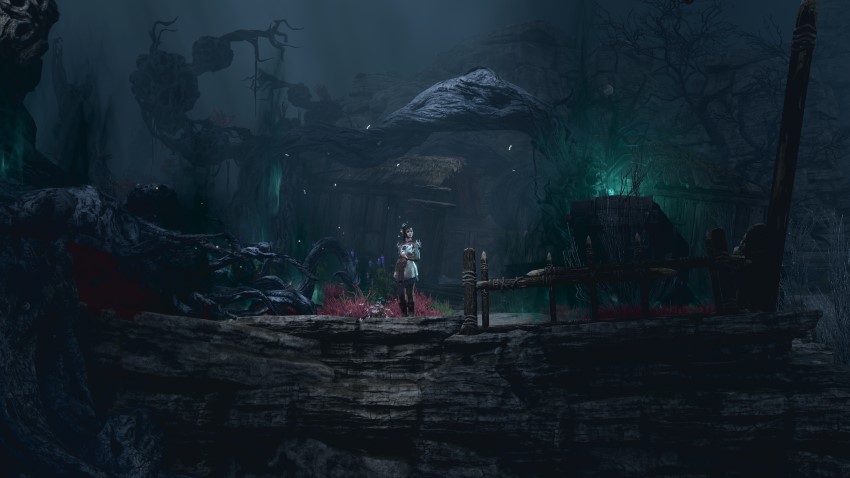
What was your overall approach to building the ambience beds for the different locations in the game? What locations were your favorite to design, and what went into the sounds for those locations?
RS: I wanted the overall ambient soundscape to be as detailed and immersive as possible. Therefore, each region has a really unique ambience design; some sounds are reused across the game, of course, but each location has its own unique ambience bed and identity.
Always, our goal was to have the world sound believable so the player would be fully immersed at all times.
The ambiences in BG3 are a mix of semi-realistic environments, like most of the outdoor ambiences in Act 1, or in the opposite, more abstract and magical environment, like the Act 2 of the game. Always, our goal was to have the world sound believable so the player would be fully immersed at all times.
I very closely followed the visual design for the game’s environments. This helped a lot in defining the type of wildlife or the various sound components I needed in order to add details and richness to the ambience. For example, the visual design for the city of Baldur’s Gate reminded me of medieval cities from southern Europe like Italy, Spain, the South of France, or Portugal. This gave me an initial direction for creating the soundscape of the city.
I used some pitched-down animal sounds with a lot of processing and a lot of different underwater sounds to create the sensation of being in a huge, dense underground cave…
Having the chance to have the DnD lore available, I also had the possibility to do some research and inspire myself to best design the soundscape for some of the regions that already existed in DnD.
The Underdark, for example, is a huge underground area consisting of a network of caves and it’s home to the Myconid people (fungi people basically) and many other creatures.
I used some pitched-down animal sounds with a lot of processing and a lot of different underwater sounds to create the sensation of being in a huge, dense underground cave, packed with humidity and giant mushrooms.
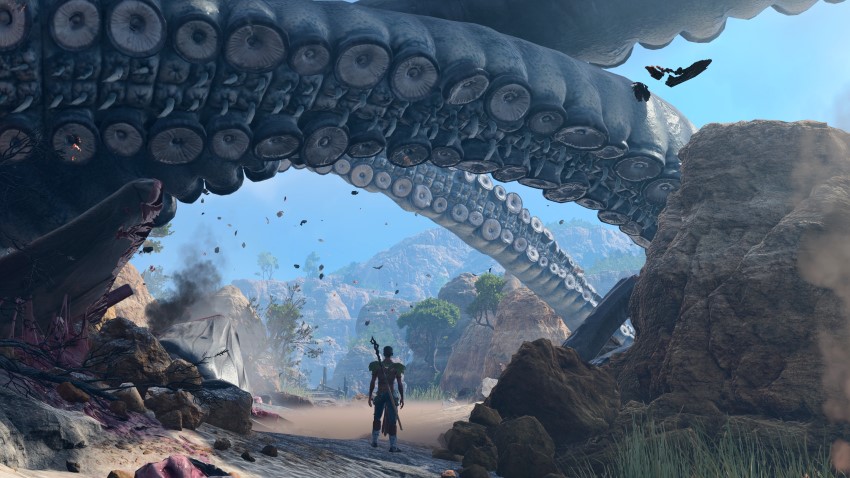
There are different types of enemies, from goblins to beasts to humanoid combatants. What were the most challenging enemies to design sound for? What was the most challenging boss in terms of sound? Why? What went into their palette of sounds?
DN: The Slayer felt like a challenge to live up to, being a creature of notable importance previous to this title. Its vocal expressions were built entirely from vulture sounds, combined with different processing techniques, pitch shifting, elastic pitch, etc. It was inspired by Predator.
The difficulty of bringing the Myrmidons to life revolved around morphing vocal expressions with elemental textures, to make something that is essentially an element sound as if it is in pain, attacking, or dying. Creating constant movement loops for them without triggering listener fatigue also took some iteration.
The difficulty of bringing the Myrmidons to life revolved around morphing vocal expressions with elemental textures…
Creating sound for the Cazador boss fight was an interesting balancing act with regard to the environmental features. His ritual process entails a multitude of beams spanning the edges of the arena, drawn from sacrificial spawns into sigils imprinted on the ground, with a larger beam drawn down the center of the arena into his coffin. Custom attenuation was required on all of these sounds so that their presence was felt without creating a sonic mess, it took quite some iteration to get it right.
FM: I think every creature will always present its own unique challenges when you go to design it. The biggest challenge for me was working on creatures that were similar to each other but still vastly different. For example, the Panther and the displacer beast are both essentially just big cats so it would have been easy to just give them the same vocals. The Panther was the most literal interpretation of sounds you would expect to hear when you see it. The displacer beast is essentially a mutated panther with tentacles and magic abilities. To differentiate them, I took the original vocals I made for the Panther and used Zynaptiq’s Morph plugin to blend them with processing and lots of interesting textures to really play up the shadowy, magical elements that make the displacer special.
Another similar example is the Dog and the Shadow Mastiff. I used more or less the same concept except I used a lot more growling textures and distortion to create the dark and evil variant. It was a good challenge to try and pull yourself away from what you expect to hear when you see something while still making it make sense – finding the balance between familiarity and something unique.
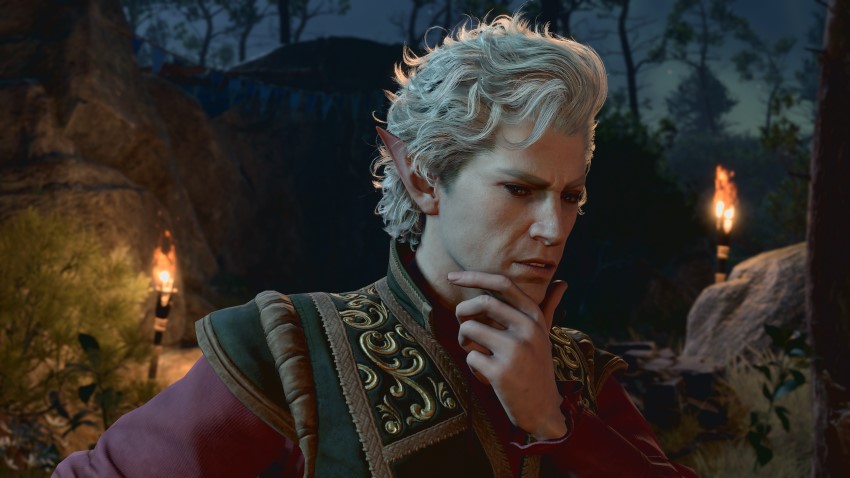
The story is an integral part of Baldur’s Gate 3. There are numerous decision-based moments of gameplay, and cinematics occur frequently. Can you talk about the process of creating the decision-based aspect of the game? How many branches of the narrative are there, and what did that mean for the sound team? How many lines of dialogue did you end up recording? How do you manage all the different lines of dialogue in the game?
DN: The current count is roughly 180k lines and we set high standards in what we look to achieve with voice performance. Re-recording and iterations are common practice.
The current count is roughly 180k lines and we set high standards in what we look to achieve with voice performance.
Managing the dialogue for VO post-processing was a process of first choosing the voices that called for it, before trying to enhance the acting with something unique, be it a complex array of delays and reverbs, just as was used to create the Mind Flayer, or pitching and bass enhancements on Thisobald Thorm, The Brewer, or the layers of creature sounds having their dynamics dictated by the expression of the main voice signal on Kar’niss, The Drider.
We didn’t make use of Wwise’s Interactive Dialogue System. Instead, we used our own internal tooling to manage all the lines
A commonality amongst most of the VO processing has been keeping a dry signal in the center whilst pushing effects left and right, using the main signal to control modulation on effects, be it as simple as automated volume, or something deeper like 3-band panning, moving constantly and changing frequency bands in different directions at the same time. Allowing the main signal to control the flow of this creates a level of congruence that sounds more natural than standard parameter oscillation, whilst adding an overall sense of dynamism and life to the effects.
Matthew Rosen (MR): We didn’t make use of Wwise’s Interactive Dialogue System. Instead, we used our own internal tooling to manage all the lines. We used Wwise to compress the files, and played back the VO as external voices, still through Wwise. Each speaker essentially had their own soundbank packed with all of their voice lines.
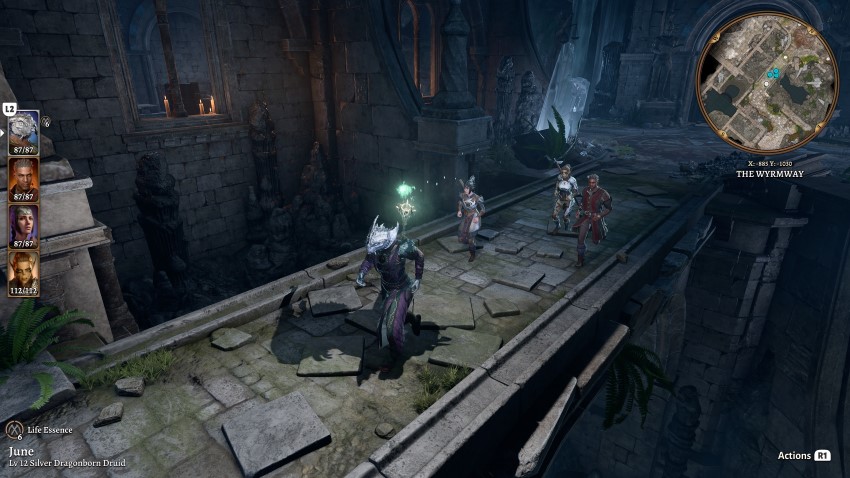
The music in the game is incredible! How did you handle the music in-game?
Borislav ‘Bobby’ Slavov (BS): Thank you so much for the kind words! Knowing that the music resonates with our fellow gamers is an ultimate reward for us.
The main goal for the soundtrack was to reflect the narrative design, the players’ actions, and the key story moments and decisions in the game.
Ever since Divinity: Original Sin 2, our interactive music systems have been designed as part of the Audio project in Wwise, which I believe is a software that gives an incredible amount of creative freedom. As I am used to telling students, if you know Wwise well then the sky’s the limit.
Wwise… is a software that gives an incredible amount of creative freedom.
Music in the game is organized and designed in two main music systems: Exploration and Combat.
When a situation changes as a result of an important player’s choice, so does the music; it instantly adapts to the newly created event. The soundtrack develops in a vast variety of moods and scopes depending on the context and the huge amount of cinematics throughout the game.
We are also very happy with our in-game instruments-performing system. The players can perform Bard songs as solo musicians, or in a party with friends, playing up to four in-game musical instruments together (Flute, Lute, Violin, Drum). Or, the player can whistle with their mouth if they don’t have any of these. (Hint: You want to earn some money? Try making a concert in the city bank!)
By Larian Studios tradition, Baldur’s Gate 3 also features fully-produced songs with lyrics in English, driven by the game design and supporting epic, emotional, or milestone moments in the game.
Andrea Abbruzzese (AA): We also had the challenging task of blending all in-game music with the most important cinematics in the game – over 70 scenes.
…we need a music system that could deal with the classic linear approach but also with the complex timing of a cinematic full of player interaction.
BG3 has a very dynamic cinematic system filled with player choices and dice rolls at times, so we need a music system that could deal with the classic linear approach but also with the complex timing of a cinematic full of player interaction.
We also were in need of a system that could work systematically when possible and that would also account for players taking their time to choose their answer. Most of those cinematics are the pinnacle of very important moments in the game followed by very important dialog choices so having a music system that could keep up with Bobby’s score was essential.
From importing the files, Tech Audio Designer Sean created an importer script that used WAAPI to automate all Wwise related set up and integration.
We achieved this with a blend of in-house tools that worked together with Wwise and some Wwise automation.
From importing the files, Tech Audio Designer Sean created an importer script that used WAAPI to automate all Wwise related set up and integration. It’s a very powerful tool that I recommend to all sound designers out there. It took care of almost all Wwise set up – switch containers to states, transition types, and events creation and set up.
Also, a big chunk of the work is in the way events are triggered. We worked closely with the tool team for the creation of a system that could trigger Wwise events at the beginning or at the end of every scene. By triggering the right state at the right time, we managed to create a system that seamlessly switches music tracks between the scenes, adds music loops when required, and blends with in-game music.
Our wonder man Borislav is a magician when it comes to blending his scores together, so once the system was in place, everything worked well musically.
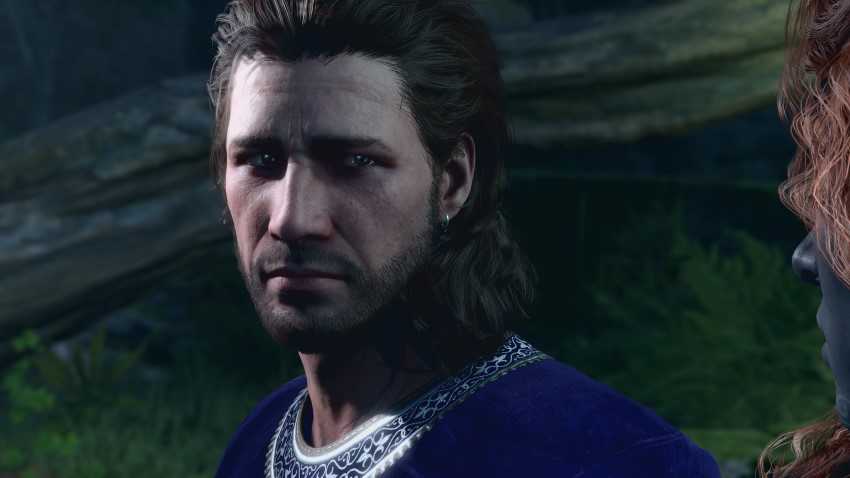
Baldur’s Gate 3 uses the new Divinity 4.0 engine. Was this a good fit for the sound team?
MR: The engine had some growing pains, growing from a very small team from Divinity: Original Sin 2, but in the end, because it’s a custom engine, we are able to customize the sound design implementation experience to our specific game and needs.
As we’ve talked about above, we do use Wwise as our middleware. We started with Wwise 2019.2 and then upgraded to 2022.1 towards the end of the development cycle.
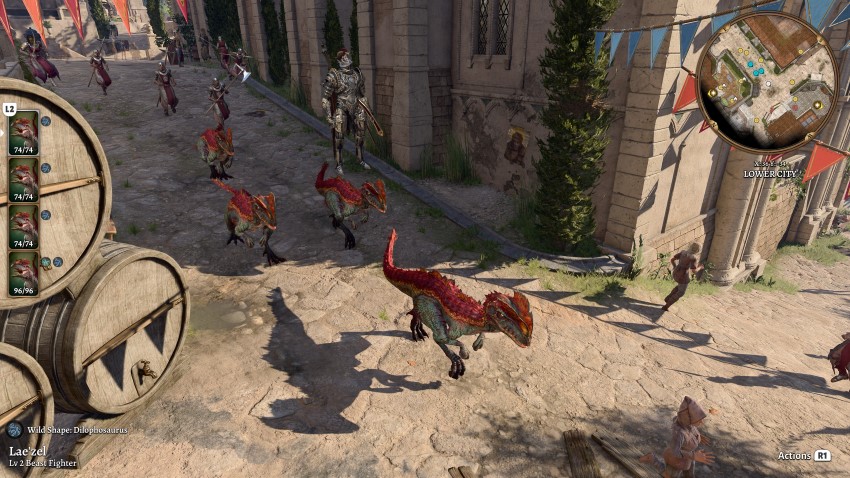
How has working on Baldur’s Gate 3 helped you to grow at your sound craft? What have you learned while working on the sound of this game?
FM: This is without question the largest project I’ve ever worked on in terms of scope. I’ve been on the game a little over 3 years, so the amount of lessons big and small is endless.
The beautiful part of our profession is that there is never one way to do something…
A big lesson is to always look for a new or different way to do something. There are over 600 abilities and a little over 100 creatures and they all need to feel unique and special. So at some point, you start to lose inspiration or start using the same procedures over and over again so things start to feel and sound the same. When this happens, it’s important to take a step back on the next assignment and just shake things up. Pick a plugin you never use, just record something interesting with no intention, and look to your peers to maybe see what they are doing and find your own twist on that.
The beautiful part of our profession is that there is never one way to do something and even if you try something that doesn’t work, maybe you found a trick for another situation. I think the worst thing you can do is put yourself or other people in a box with a set of rules they must follow.
…you need to always keep in mind what the final product will sound like as a whole, in order to achieve coherence.
RS: Because of the crazy scope of this project, one of the most important things I learned was to find ways to achieve consistency in our designs and in our mix. The Wwise project became really massive and we have so many different systems in place that need to interact together that it’s very easy to get lost in managing them, so you need to always keep in mind what the final product will sound like as a whole, in order to achieve coherence.
DN: This being the biggest project I’ve worked on, has taught me how to be competent in an environment that can be fast-paced with multiple tasks requiring attention simultaneously. After acclimating to this, one can maintain responsibility on a scope that, from the outside looking in, can seem daunting, however with the right team structure and workflow, a lot can be achieved.
A big thanks to Stefan Randelshofer, Borislav Slavov, Matthew Rosen, Frank Munro, Diarmuid Nolan, Robin Seyral, and Andrea Abbruzzese for giving us a behind-the-scenes look at the sound of Baldur’s Gate 3 and to Jennifer Walden for the interview!

